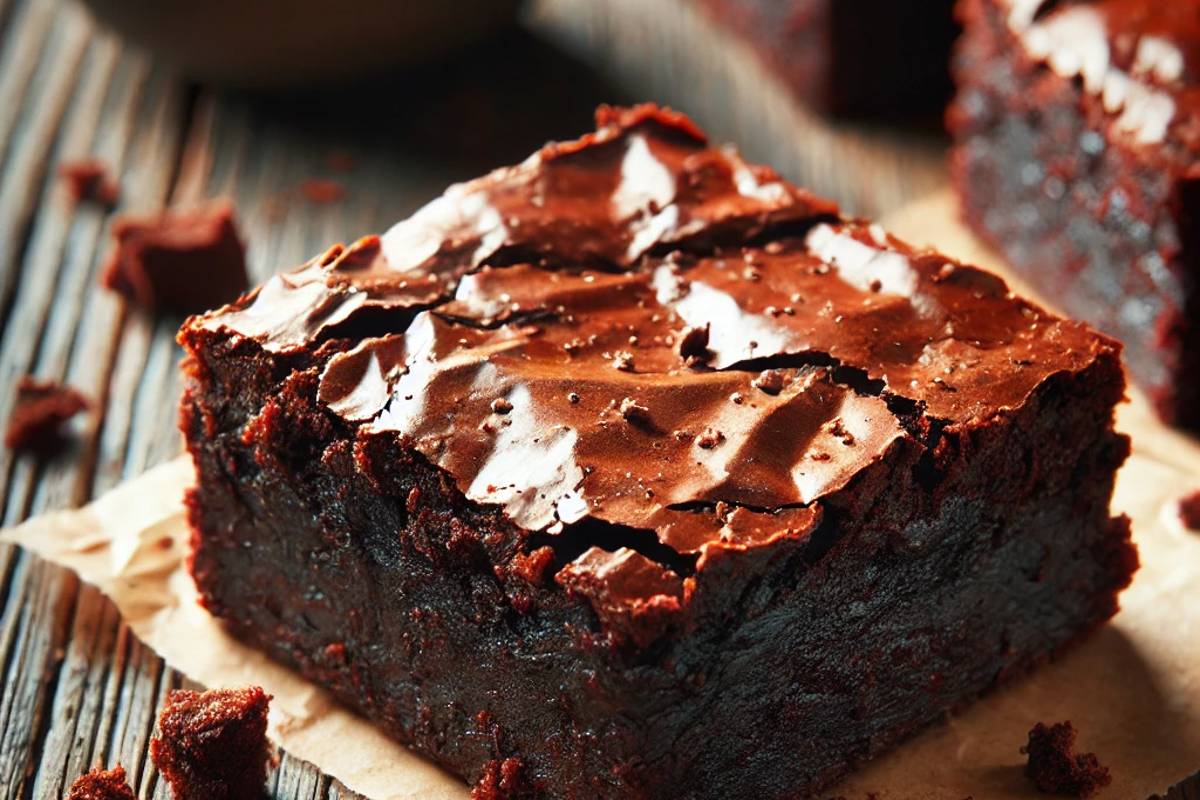Brownies are a popular dessert enjoyed by many, but did you know there are two main types of brownies: fudgy brownies and cakey brownies? The difference in their texture is a result of various factors, including the ingredients used and the way they are baked. This article will explore these two types and explain what makes them distinct.
In addition to diving into these differences, I’ll also suggest some delicious variations like banana brownies from this ultimate banana brownie recipe, which gives a delightful twist on the classic brownie.
Brownies: A Brief Introduction
Brownies have been a staple in the world of desserts for decades, and their versatility has made them a favorite. There are two main camps when it comes to brownies: those who prefer fudgy brownies and those who enjoy cakey brownies. But what makes these two types of brownies so different?
The secret lies in the ratio of ingredients and the baking technique. For a comprehensive guide on perfecting your brownie texture, you can read more in the Brownie Texture Guide to master the art of baking the perfect brownie.
Fudgy Brownies
Fudgy brownies are rich, dense, and decadent. They have a gooey, melt-in-your-mouth texture, making them the ultimate indulgence for chocolate lovers. What sets them apart is the balance of ingredients, including:
- Higher fat content: Fudgy brownies contain more butter or oil, which creates a moist, soft texture.
- Minimal flour: Less flour helps prevent the brownie from becoming dry and cakey.
- Extra chocolate: The more chocolate, the better! This enhances the fudgy consistency.
- No leavening agents: Fudgy brownies typically don’t use baking powder or baking soda, keeping them dense and moist.
If you love fudgy brownies, you might also want to try recipes that incorporate unique flavors, such as banana brownies, which add a fruity twist to the classic fudgy texture.
Cakey Brownies

Cakey brownies, on the other hand, are lighter, fluffier, and resemble the texture of a chocolate cake. They’re perfect for those who prefer a less dense and more structured bite. Key characteristics of cakey brownies include:
- More flour: Cakey brownies use more flour to give them a lighter, fluffier texture.
- Leavening agents: Baking powder or baking soda helps the brownies rise and become airy.
- Less fat: Cakey brownies contain less butter or oil, which contributes to their cake-like crumb.
For those who enjoy experimenting in the kitchen, this ultimate brownie cake recipe combines the best of both worlds by blending the fudginess of a brownie with the structure of a cake.
Key Differences Between Fudgy and Cakey Brownies
The fundamental differences between these two types of brownies come down to three primary factors:
- Fat content: Fudgy brownies contain more fat, whereas cakey brownies use less.
- Flour ratio: Cakey brownies require more flour to achieve a lighter texture.
- Leavening agents: Cakey brownies rise due to baking powder or soda, while fudgy brownies stay dense without these agents.
Other Factors That Influence Brownie Texture
Sugar’s Role in Brownies
The type of sugar you use can affect the texture of your brownies. Brown sugar adds moisture and chewiness due to its molasses content, while white sugar creates a crispier crust.
Eggs and Their Influence
The number of eggs in your recipe can also influence the texture. More eggs will give your brownies a cakey structure, while fewer eggs will result in a fudgier consistency. For more information on how eggs and other ingredients influence brownies, you can check out this guide on using eggs in brownies.
Fat Content
As mentioned earlier, fat plays a crucial role in determining the texture of brownies. More fat leads to a fudgier result, while less fat will produce a cakier brownie. If you’re experimenting with alternatives to butter, this guide on replacing oil with Greek yogurt in brownies provides excellent insight into how substitutions can affect texture.
FAQs About Brownies

What Causes Brownies to Be Fudgy vs. Cakey?
The balance of fat and flour is key. Fudgy brownies contain more fat and less flour, while cakey brownies use more flour and a leavening agent.
Can You Turn a Cakey Brownie Recipe into a Fudgy One?
Yes! To make cakey brownies fudgier, reduce the amount of flour and increase the fat content, especially butter or chocolate.
Why Do Brownies Sometimes Turn Out Dry?
Overbaking or too much flour can make brownies dry. To prevent this, monitor baking times and ensure your ingredients are balanced.
Which Type of Brownie Is Healthier?
Cakey brownies tend to be lower in fat, making them a bit lighter in calories. However, fudgy brownies may contain more chocolate, which has antioxidants.
Conclusion
Whether you prefer your brownies fudgy or cakey, each type offers something unique. Fudgy brownies are rich and indulgent, while cakey brownies are lighter and more structured. Understanding the ingredients and techniques that affect their texture will help you make the perfect batch every time. For more exciting recipes, you can explore related topics like banana brownie recipes or learn about substitutions in baking.

